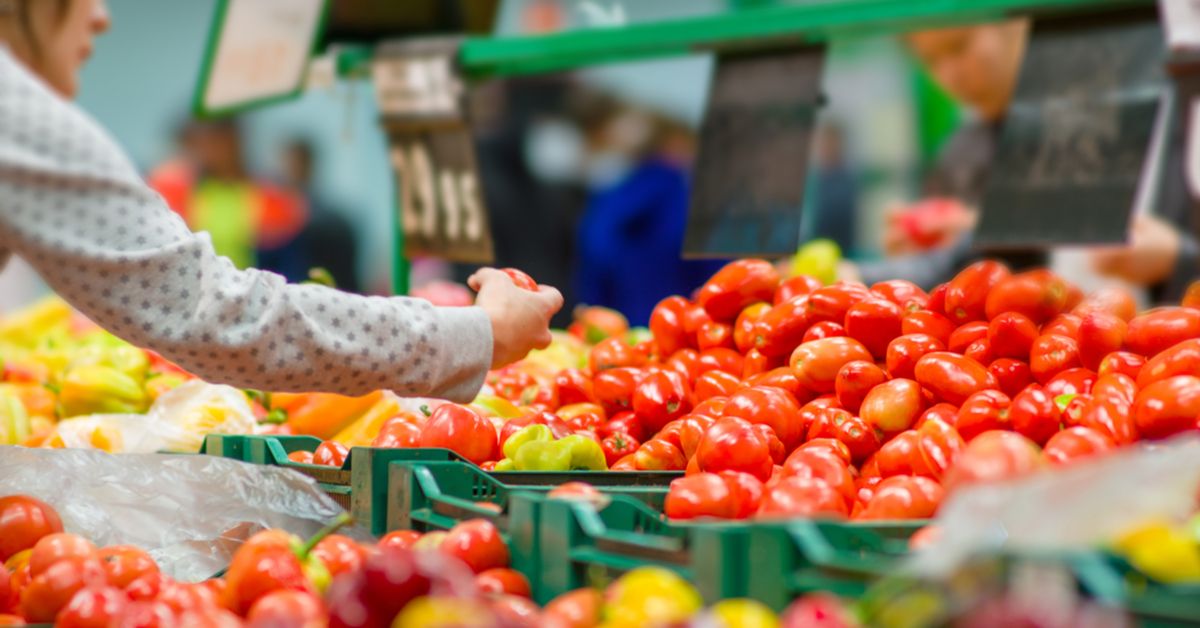In February 2018, the Trump administration floated a proposal to replace money allotments from a federal food assistance program through the dispersal of "harvest boxes" containing certain food items.
It quickly came under fire from both retailers and advocates for low-income communities. Deborah Weinstein, executive director of the Coalition on Human Needs, told us:
What it does is treat low-income, struggling families with a lack of respect and it is one that will create more burdens for people that they'll have to show up to stand in line to collect a box of food. It sets us back decades, if not hundreds of years in terms of the way to help people really get on their feet.
The program would affect households receiving $90 or more a month as part of the Supplemental Nutrition Assistance Program (SNAP), colloquially known as "food stamps." Around two-thirds of people currently benefitting from SNAP are either senior citizens, minors, or people with disabilities. More than 80 percent of SNAP households fit the income criteria to be included in the new initiative, which is part of the proposed federal budget released by the federal Office and Management and Budget on 12 February 2018.
The plan would cut $17 billion from the SNAP program in fiscal year 2019, and more than $213 billion by 2029. The president of another activist group, Jack Neill of the Food Research & Action Center, said in a statement would "eviscerate" the program:
The mind-boggling hundreds of billions of dollars’ worth of cuts and the ill-conceived programmatic distortions, if adopted, will mean much more hunger and poverty, worsened health, decreased ability of children to do well in school, and lower productivity for America.
Under the proposal, the affected households would get what the Trump administration has called food "harvest boxes" instead of a percentage of their current benefits. The boxes would include items such as "shelf-stable milk, ready-to-eat cereals, pasta, peanut butter, beans and canned fruit, vegetables, and meat, poultry or fish":
This cost-effective approach will generate significant savings to taxpayers with no loss in food benefits to participants. It will also improve the nutritional value of the benefit provided and reduce the potential for EBT fraud. States will have substantial flexibility in designing the food box delivery system through existing infrastructure, partnerships, or commercial/retail delivery services.
Conservatives have often claimed that SNAP recipients regularly commit fraud or wrongfully use their benefits to buy "extravagant" items like steak and lobster. But in December 2016, Fox News retracted a report promoting the claim that fraudulent use of SNAP benefits was at "an all-time high."
Further, the idea that SNAP enrollees use their benefits in outlandish ways was debunked by a March 2007 report by the United States Department of Agriculture:
The idea of restricting the use of food stamp benefits may be appealing on its face. However, upon closer examination, serious concerns emerge regarding the feasibility and rationale for the proposed restriction.
- No clear standards exist to define foods as good or bad, or healthy or not healthy;
- Food restrictions would pose major implementation challenges and increase program complexity and costs;
- Restrictions may not change the nature of participants’ food purchases;
- No evidence exists which indicates that food stamp benefits directly contribute to poor food choices and negative dietary outcomes, such as obesity.
The report also said:
Food stamp recipients are no more likely than higher income consumers to choose foods with little nutritional value. Thus the basis for singling out low-income food stamp recipients and restricting their food choices is not clear.
Weinstein, whose group is an umbrella organization for several other groups advocating for policies benefitting low-income communities, told us that critics of SNAP also claim, falsely, that program enrollees do not work. But she said that in reality, the possibility of having to go to specific locations to get their "harvest boxes" would present obstacles for senior or disabled SNAP users, as well as low-income working families. She told us:
It's almost this very antiquated notion of, "We're going to give people a box of food and we'll choose for them" so that is part of the stereotype — that people don't know how to manage their own very limited resources for food.
Contrary to stereotypes, the USDA says on its website that 43 percent of SNAP recipients "live in a household with earnings."
For instance, it is unclear how many SNAP enrollees are current or retired U.S. military service members, but as recently as 2015, a reported $80 million in transactions — equivalent to around 751,000 purchases — were made at military commissaries through SNAP benefits. Weinstein also said that the White House's "harvest box" proposal would inconvenience businesses:
If they're supposed to be so conservative, this should be the last thing that they want to do. We have an existing food delivery system and it's called supermarkets and grocery stores. We should give people the debit cards to buy the food that we need.
The retail trade group the Food Marketing Institute, which advocates on behalf of the grocery industry, described the Trump administration's proposal as overcomplicated:
Perhaps this proposal would save money in one account, but based on our decades of experience in the program, it would increase costs in other areas that would negate any savings. As the private partners with the government ensuring efficient redemption of SNAP benefits, retailers are looking to the administration to reduce red tape and regulations, not increase them with proposals such as this one.
